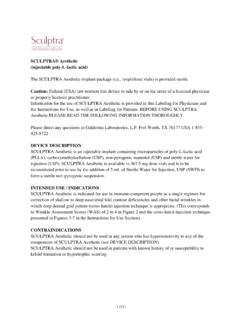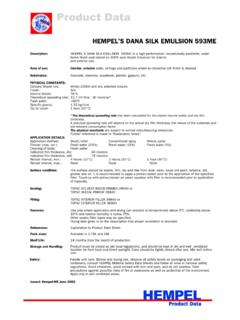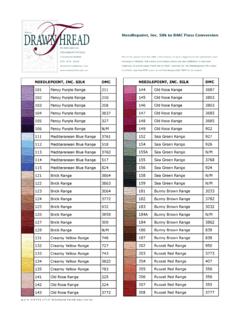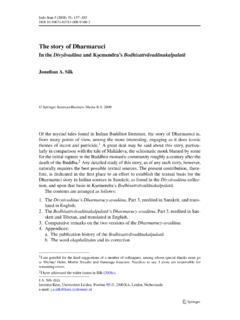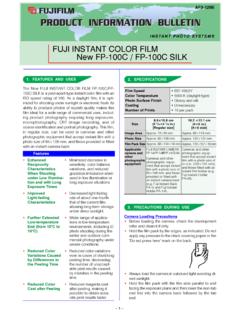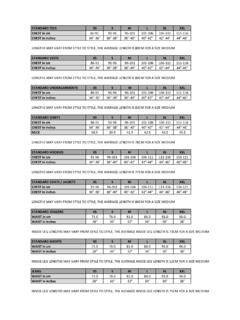Transcription of Restylane Silk Injectable Gel with 0.3% Lidocaine
1 1 (28) Restylane silk Injectable Gel with Lidocaine Caution: Federal Law restricts this device to sale by or on the order of a physician or licensed practitioner. DESCRIPTION Restylane silk is a gel of hyaluronic acid generated by Streptococcus species of bacteria, chemically crosslinked with BDDE, stabilized and suspended in phosphate buffered saline at pH=7 and concentration of 20 mg/mL with Lidocaine . INDICATION Restylane silk is indicated for submucosal implantation for lip augmentation and dermal implantation for correction of perioral rhytids in patients over the age of 21. CONTRAINDICATIONS Restylane silk is contraindicated for patients with severe allergies manifested by a history of anaphylaxis or history or presence of multiple severe allergies. Restylane silk contains trace amounts of gram positive bacterial proteins, and is contraindicated for patients with a history of allergies to such material.
2 Restylane silk is contraindicated for patients with bleeding disorders. Restylane silk is contraindicated for implantation in anatomical spaces other than the dermis or submucosal implantation for lip augmentation. Restylane silk should not be used in patients with previous hypersensitivity to local anesthetics of the amide type, such as Lidocaine . WARNINGS Defer use of Restylane silk at specific sites in which an active inflammatory process (skin eruptions such as cysts, pimples, rashes, or hives) or infection is present until the process has been controlled. Injection site reactions ( , lip swelling, lip pain, and contusion) to Restylane silk have been observed as consisting mainly of short-term minor or moderate inflammatory symptoms starting shortly after treatment, with an average of less than 18 days duration in the lips. In some cases delayed onset of these events has been observed with a range of 21 to 142 days after treatment.
3 Most events with delayed onset resolved within 18 days. Injection site swelling appears to occur more frequently with the linear antegrade method of injection. Rare post-market Restylane reports of immediate post-injection reactions included extreme swelling of lips, the whole face and symptoms of hypersensitivity such as anaphylactic shock. Introduction of product into the vasculature may lead to embolization, occlusion of the vessels, ischemia, or infarction. Take extra care when injecting soft tissue fillers, for example inject the product slowly and apply the least amount of pressure necessary. Rare but serious adverse events associated with the intravascular injection of soft tissue fillers in the face have been reported and include temporary or permanent vision impairment, blindness, cerebral ischemia or cerebral hemorrhage, leading to stroke, skin necrosis, and damage to underlying facial structures.
4 Immediately stop the injection if a patient exhibits any of the following symptoms, including changes in vision, signs of a stroke, blanching of the skin, or unusual pain during or shortly after the procedure. Patients should receive prompt medical attention and possibly 2 (28) evaluation by an appropriate health care practitioner specialist should an intravascular injection occur. Restylane silk must not be implanted into blood vessels. Localized superficial necrosis and scarring may occur after injection in or near vessels, such as in the lips, nose, or glabellar area. It is thought to result from the injury, obstruction, or compromise of blood vessels. Delayed onset inflammatory papules have been reported following the use of dermal fillers. Inflammatory papules that may occur rarely should be considered and treated as a soft tissue infection. Injections of mL or greater (upper and lower lip combined) per treatment session increases the occurrence of injection site reactions.
5 If a volume of more than 3 mL is needed to achieve optimal correction, a follow-up treatment session is recommended. As with all dermal filler procedures, Restylane silk should not be used in vascular rich areas. Use of similar products in these areas, such as glabella and nose, has resulted in cases of vascular embolization and symptoms consistent with ocular vessel occlusion, such as blindness. For additional information please see the Post-Marketing Surveillance in Adverse Events. PRECAUTIONS Restylane silk is packaged for single patient use. Do not resterilize. Do not use if package is opened or damaged. Health care practitioners are encouraged to discuss all potential risks of soft tissue injection with their patients prior to treatment and ensure that patients are aware of signs and symptoms of potential complications. In order to minimize the risks of potential complications, this product should only be used by health care practitioners who have appropriate training, experience, and who are knowledgeable about the anatomy at and around the site of injection.
6 The safety or effectiveness of Restylane silk for the treatment of anatomic regions other than lips or perioral rhytids has not been established in controlled clinical studies. Refer to the clinical studies section for more information on implantation sites that have been studied. The safety and effectiveness of cannula injection of Restylane silk have only been clinically evaluated in two brands of blunt-tip cannulas (DermaSculpt and Softfil) that are 25G-27G and 11/2 inches in length. The safety or effectiveness of Restylane silk for the treatment of perioral rhytids with a small bore, blunt tip cannula has not been established in controlled clinical studies. The safety and effectiveness of Restylane silk for lip augmentation has not been established in patients under the age of 22 years. There is limited information on the safety of Restylane silk in patients less than 36 years of age.
7 In a premarket study of Restylane silk with needle injection (MA-1700-04), the incidence of injection site reactions in 60 patients less than 36 years was similar to the 157 patients between the ages of 36 and 65 years. The majority of these injection site reactions were mild in severity. In the premarket study of Restylane silk with cannula injection (43 USC1505), 17 subjects less than 36 years of age were studied, and the incidence of injection site reactions were similar to the 43 subjects between the ages of 36 and 72 years. As with all transcutaneous procedures, Restylane silk implantation carries a risk of infection. Standard precautions associated with Injectable materials should be 3 (28) followed. The safety of Restylane silk for use during pregnancy, in breastfeeding females or in patients under 18 years has not been established The safety in patients with known susceptibility to keloid formation has not been studied.
8 Formation of keloids may occur after dermal filler injections including Restylane silk . In a premarket study of Restylane silk with needle injection (MA-1700-04), the incidence and severity of adverse events in 51 subjects with Fitzpatrick Skin Types IV (n=48) and V (n=3) was similar to that reported in the general population and no unique adverse events associated with these patient subgroups was observed. In the premarket study of Restylane silk with cannula injection (43 USC1505), the incidence and severity of adverse events in 13 subjects with Fitzpatrick Skin Types IV (n=8), V (n=3), and VI (n=2) were similar to those reported in the general population and no unique adverse events associated with these patient subgroups was observed. Hyperpigmentation may occur after dermal filler injections including Restylane silk . Hyperpigmentation was not observed in the two Restylane silk studies of 281 total subjects including subjects with Fitzpatrick Skin Types IV (n=56), V (n=6), and VI (n=2).
9 The safety profile for Restylane silk lip augmentation in persons of color is based upon information from 64 total subjects with Fitzpatrick Skin Types IV, V and VI from two clinical studies (MA-1700-04 and 43 USC1505). Within this population, the incidence of adverse events was similar to the overall study population. Restylane silk should be used with caution in patients on immunosuppressive therapy. Bruising or bleeding may occur at Restylane silk injection sites. Patients who have undergone therapy with thrombolytics, anticoagulants, or inhibitors of platelet aggregation in the 3 weeks preceding treatment with Restylane silk have not been studied. After use, syringes and needles/blunt cannula should be handled as potential biohazards. Disposal should be in accordance with accepted medical practice and applicable local, state and federal requirements. The safety of Restylane silk with concomitant dermal therapies such as epilation, UV irradiation, or laser, mechanical or chemical peeling procedures has not been evaluated in controlled clinical trials.
10 Patients should minimize exposure of the treated area to excessive sun, UV lamp exposure and extreme cold weather at least until any initial swelling and redness has resolved. If laser treatment, chemical peeling or any other procedure based on active dermal response is considered after treatment with Restylane silk , there is a possible risk of eliciting an inflammatory reaction at the implant site. This also applies if Restylane silk is administered before the skin has healed completely after such a procedure. Injection of Restylane silk into patients with a history of previous herpetic eruption may be associated with reactivation of the herpes. Restylane silk is a clear, colorless gel without particulates. In the event that the content of a syringe shows signs of separation and/or appears cloudy, do not use the syringe and notify Galderma Laboratories, at 1-855-425-8722.
